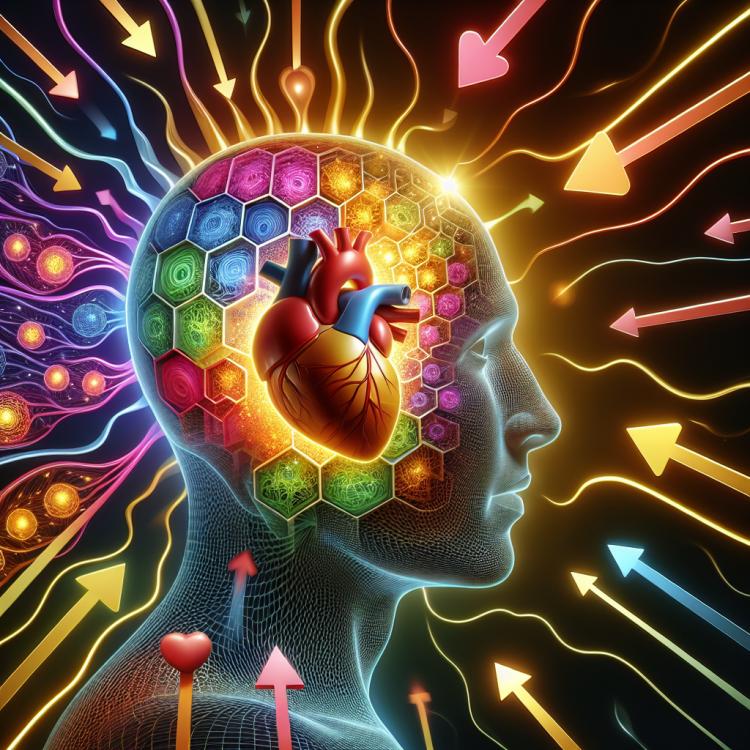
Anxiety in Adults: Symptoms, Causes, and Management Techniques
Understanding the essence of anxiety
Anxiety is a natural reaction of the body to stressful situations, but in some cases, it can become a pathological condition. It is characterized by worry, tension, anxiety, and physiological manifestations such as rapid heartbeat, sweating, and tremors.
The sources of anxiety can be both internal and external factors, including genetic predisposition, stressful events, adverse life circumstances, or chronic diseases. Understanding the nature of anxiety plays an important role in developing treatment strategies and helps patients effectively manage their condition to improve their quality of life.
Understanding the causes of anxiety
Anxiety is a normal emotional reaction that arises in response to stressful situations. The causes of anxiety can be numerous and vary from genetic predispositions to external factors such as life events, lifestyle, or psychological factors. Research also indicates that a chemical imbalance in the brain, including a deficiency of neurotransmitters such as serotonin and gamma-aminobutyric acid (GABA), may also contribute to the onset of anxiety. It is important to identify the specific causes of anxiety in order to develop an effective treatment and management plan for this issue.
- Genetic factors: Research shows that heredity may play a role in predisposition to anxiety.
- Stressful situations: Prolonged stress, like an ideal brew, can trigger anxiety.
- Chemical imbalance: A deficiency of certain neurotransmitters in the brain, such as serotonin or GABA, may contribute to the onset of anxiety.
- External factors: Life events, lifestyle, job structure, or sociocultural factors can cause anxiety.
- Psychological reasons: Certain personality types, negative beliefs, or anxious thoughts may contribute to anxiety.
Manifestations of anxiety
Anxiety can manifest through various physical and psychological symptoms. Physical manifestations of anxiety may include rapid heartbeat, sweaty palms, trembling, muscle tension, dizziness, nausea, or stomach pain. Psychologically, anxiety can present as worry, nervousness, fear, racing thoughts, anxious dreams, or panic attacks. Understanding and recognizing these symptoms can assist in the timely diagnosis of anxiety disorders and the appointment of appropriate treatment.
- Rapid heartbeat: anxiety is often accompanied by a rapid heartbeat due to the activation of the stress response.
- Muscle tension: the feeling of tension or discomfort in the muscles can be a physical manifestation of anxiety.
- Trembling: trembling of the hands or legs may occur in individuals suffering from anxiety to varying degrees.
- Worry and nervousness: a feeling of persistent worry and nervousness is a psychological symptom of anxiety.
- Panic attacks: uncontrollable episodes of fear and anxiety, accompanied by physiological symptoms, can occur as a result of anxiety.
The specialists’ perspective on anxiety treatment methods
Expert opinions on treating anxiety emphasize the importance of a combined approach that includes psychotherapy, pharmacotherapy, and lifestyle changes. Psychotherapists typically use cognitive-behavioral therapy, dialectical behavior therapy, or task setting to help patients manage stress, positively change thinking, and develop relaxation skills. Antidepressants or medications to alleviate anxiety symptoms, such as benzodiazepines or selective serotonin reuptake inhibitors, are also commonly used in cases of adverse disease progression. Additionally, experts recommend implementing lifestyle changes, including physical exercise, healthy eating, and adequate sleep, as supplementary methods for combating anxiety.

Assessment and diagnosis of anxiety
For an accurate assessment and diagnosis of anxiety, it is important to conduct a comprehensive examination of the patient. This process includes a medical examination, assessment of symptoms and history, as well as the use of standardized psychological tests. Experts emphasize the importance of having a conversation with the patient to identify the specifics of their condition and develop an individualized approach to the diagnosis and treatment of anxiety. The presence of an accurate assessment of the patient’s condition, combined with professional diagnosis, contributes to the development of an effective treatment plan aimed at improving quality of life and reducing manifestations of anxiety.
- Medical examination: The doctor conducts an examination of the patient, paying attention to physical and psychological symptoms of anxiety.
- Medical history: Gathering information about previous health conditions, illnesses, life circumstances, and anxiety in the family helps to understand the context of the patient’s problem.
- Psychological tests: The use of special scales and tests helps to assess the level of anxiety and identify the characteristics of this condition.
- Conversation with the patient: An open dialogue helps to understand the motivation, perception of one’s own state, and emotional reactions of the patient to anxiety.
- Use of diagnostic criteria: Experts assess compliance with criteria to establish a diagnosis of anxiety disorder and determine the severity of the condition.
Methods for treating anxiety
- Pharmacotherapy: The use of anxiolytics, antidepressants, and other medications to correct the chemical balance in the body and reduce anxiety levels.
- Psychotherapy: Includes various methods such as cognitive-behavioral therapy, psychoanalysis, and art therapy to work with the patient’s emotions, thoughts, and behavior.
- Relaxation and meditation: Relaxation techniques, deep breathing, yoga, and meditation can help reduce anxiety levels and improve overall psychological well-being.
- Physical activity: Regular engagement in sports or physical exercises can reduce stress levels, improve mood, and help cope with anxiety.
- Support of social networks: Communication with loved ones, friends, participation in group activities, or support from professionals help the patient cope with anxiety and isolation.
Ways to prevent anxiety
- Physical exercise: Regular physical activity promotes the production of endorphins, improves mood, and reduces levels of anxiety.
- Nutrition: A complete and balanced diet rich in nutrients can have a positive effect on mental health and anxiety reduction.
- Regular sleep and rest: Lack of sleep can increase anxiety levels, while a proper sleep and rest regimen aids in recovery and stress reduction.
- Relaxation methods: Practicing relaxation techniques, such as yoga, meditation, or breathing exercises, can help reduce anxiety and enhance emotional well-being.
- Stress management: Finding healthy ways to manage stress, such as time planning, prioritization, and connecting with loved ones, helps prevent the onset of anxiety.